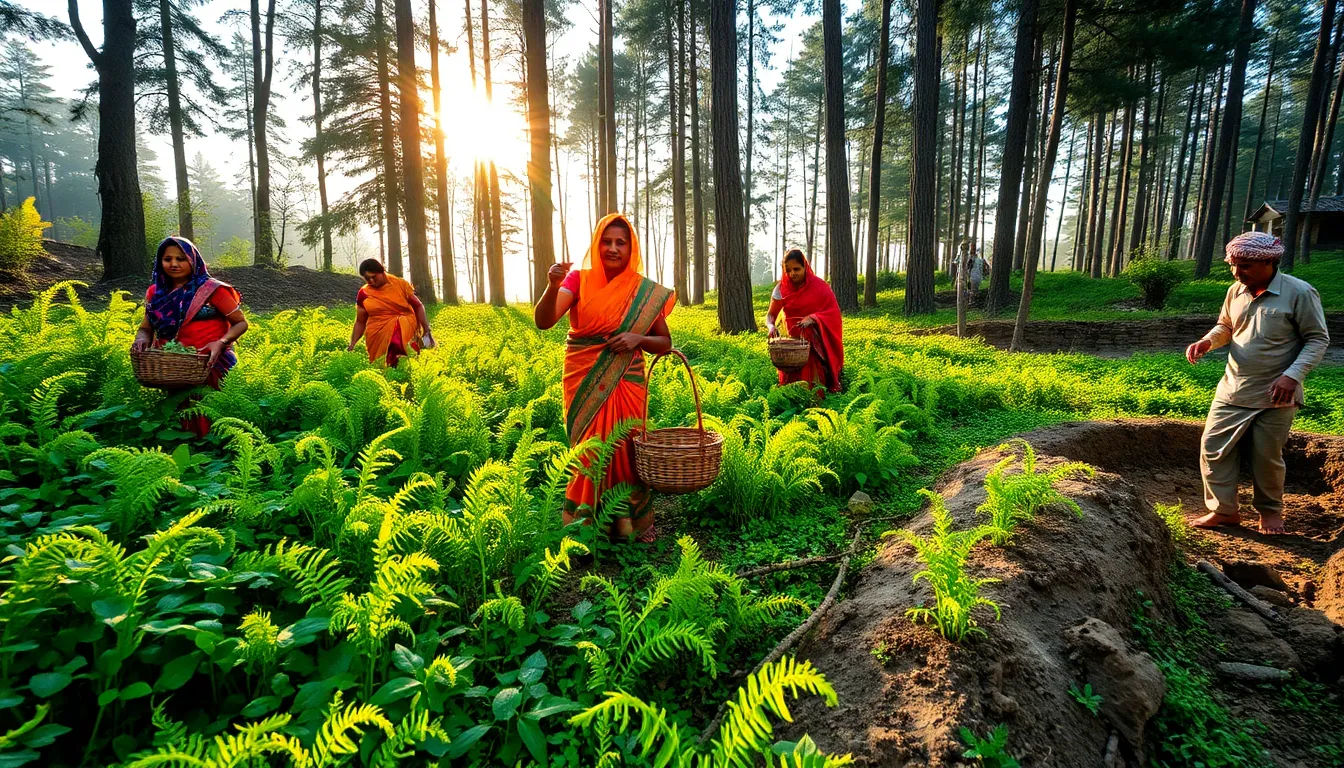India boasts a rich culinary heritage filled with unique ingredients and regional specialties. One such ingredient is Lingad, also known as fiddlehead fern. This curled, green shoot is not only a visual delight but also a taste sensation. The fiddlehead fern has been part of traditional diets in various parts of India for centuries. It’s especially popular in the Himalayan states, where locals forage these seasonal delights. In Himachal Pradesh, it is known as Lingad. In the Kullu Valley, it is called Lingri, while in Chamba, locals refer to it as kasrod. The beauty of Lingad lies in its versatility. It can be stir-fried, pickled, or used in various dishes. Many people enjoy it with rice and lentils, while others incorporate it into richer dishes with meat or spices. The fern is not just delicious; it is also packed with nutrients. It is low in calories but high in potassium and other essential vitamins. However, caution is required. Some fiddlehead varieties, particularly bracken, can be toxic if not cooked properly. Cooking them thoroughly is crucial to eliminate any potential toxins. In addition, they should be washed carefully to remove any brown husk. The forage season for fiddleheads is brief, usually occurring in spring. This makes it a sought-after delicacy. People often head to the forests to harvest them or buy them fresh from local markets. For those unfamiliar with this ingredient, it resembles asparagus in taste and has a fibrous texture similar to broccoli stems. Many families have cherished memories tied to Lingad. Some recall enjoying it during family gatherings or holidays, where it was served alongside other traditional dishes. This connection to culture and history adds to its charm. As interest in local and sustainable foods grows, more people are discovering the joys of cooking with Lingad. Chefs and home cooks alike are experimenting with new recipes featuring this unique ingredient. From simple stir-fries to elaborate dishes, the possibilities are endless. For a quick and easy preparation, simply boil the fiddles for a few minutes, then sauté them with mustard oil, ginger, and spices. Serve with rice for a delightful meal. The journey of Lingad from the forest to the plate is a testament to the rich biodiversity of India. As we celebrate this seasonal ingredient, we also acknowledge the importance of preserving traditional knowledge about foraging and cooking. So, if you have the chance this spring, seek out Lingad and explore its unique flavour in your cooking. It’s a taste of tradition that connects us to the land and our culinary heritage.
Discovering Lingad: The Hidden Gem of Indian Cuisine
 Discovering Lingad: The Hidden Gem of Indian Cuisine
Discovering Lingad: The Hidden Gem of Indian Cuisine